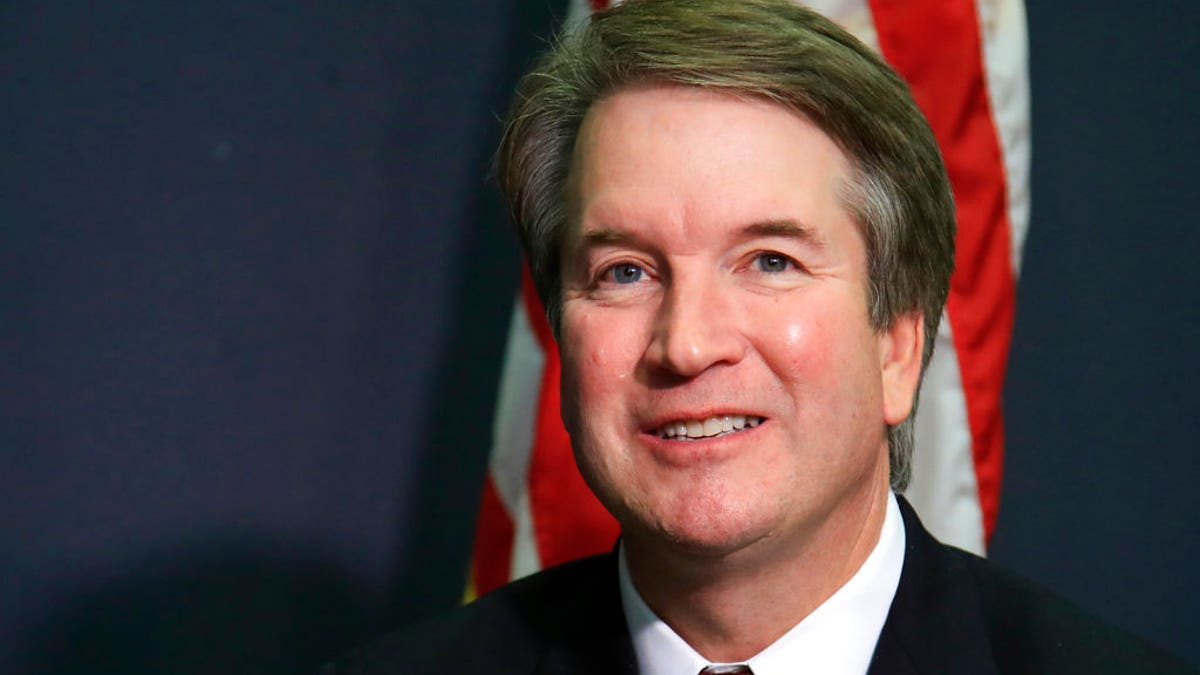
Supreme Court nominee Brett Kavanaugh glances at reporters during a meeting with Sen. James Lankford, R-Okla., on Capitol Hill in Washington, Thursday, July 19, 2018. (AP Photo/Manuel Balce Ceneta) (Copyright 2018 The Associated Press. All rights reserved.)
When The Framers designed the Constitution’s separation of powers, they thought that Congress would be the most powerful of the three branches. Today, most observers of government would agree that Congress is by far the weakest.
Ironically, Brett Kavanaugh—President Trump’s most recent nominee for the Supreme Court—could return legislative authority Congress. His confirmation will add a fifth vote to a conservative group in the Court that seeks to take power away from the agencies of the administrative state and put it back where it belongs, in the legislative branch.
The reason for Congress’s weakness today is a failure of the courts over many years to carry out a role that the Framers expected them to perform: to keep the elected branches within their assigned responsibilities. The Framers designed a system of separated powers—a Congress to make the laws; a president and executive branch to enforce or execute the laws; and a judiciary to interpret the laws—because they believed that was the only way to preserve the peoples’ liberty against the encroachments of government.
In the Framers’ design, the judiciary also had an additional and special role. It was to be responsible for keeping the other two branches within their assigned areas of responsibility. In Federalist 78—one of a number of articles written by the Framers to persuade the American people to ratify the Constitution—Alexander Hamilton explained that judges were to be given lifetime appointments in the Constitution because the judiciary was the “guardians of the Constitution” and judges would need “fortitude” to stand up to the legislative branches when they tried to expand outside their constitutionally-assigned roles. In 2013, Chief Justice Roberts restated this idea, noting in a case that year that the Judiciary is obliged “not only to confine itself to its proper role, but to ensure that the other branches do so as well.”
Allowing unelected officials to resolve the contending issues in our society is not how things should be done in a democracy.
The Framers’ structure remained in balance for almost 150 years, but everything began to change during FDR’s New Deal. In 1935, the Supreme Court declared two congressional actions unconstitutional because they violated the separation of powers by delegating legislative power to the executive branch. But after his landslide election in 1936, FDR retaliated with a proposal to increase the size of the Court to 16, allowing him to appoint seven new members.
This “court-packing” plan was unpopular with the public, and ultimately did not pass Congress, but it appeared to cow the Supreme Court, which has never again declared that Congress had delegated legislative authority to an executive agency. This opened a wide field for both the creation of new administrative agencies and empowering them with wide-ranging rule-making authority.
Completing the Court’s surrender to the executive was the 1984 unanimous decision in Chevron v. National Resources Defense Council. In this case, the Court directed lower federal courts to defer to administrative interpretations of their own authorities, if that interpretation was “reasonable.” This allowed administrative agencies to reinterpret existing statutory authority in new ways and again substantially increased administrative power.
The consequences of this for Congress were profound. First, it meant that many major decisions, which used to go to Congress for resolution, were now made by the agencies of the administrative state. It also encouraged Congress to take the easy way in creating laws. Members of Congress found that they would be given credit by their constituents if they solved national problems simply by giving new powers to executive agencies. So they began to enact legislation that only set goals, leaving it to administrative agencies—unelected officials--to make the major and difficult decisions that should have been made by Congress. And when constituents complain about these decisions, members say ‘That was the administrative agency’s decision; I never voted for that.” This reduces the accountability of Congress and leaves constituents without recourse.
All this can be changed by a conservative majority at the Supreme Court, which would be the result if Judge Kavanaugh is confirmed. He would join four conservatives—Chief Justice Roberts and Justices Thomas, Alito and Gorsuch-- who have already expressed views in prior cases that would support the elimination or substantial modification of the Chevron rule that requires the courts to defer to administrative agencies’ interpretation of their statutory powers. This decision alone would reduce the ability of administrative agencies to use their existing authorities for new purposes in the future. The Court is also likely to look more carefully at restoring the separation of powers by disallowing delegations of its legislative power by Congress.
These major judicial changes will reduce the role of unelected administrative agencies in policy-making, and thus restore the authority of Congress to make the laws. There is really no alternative to this if we expect to continue to function as a democracy. Allowing unelected officials to resolve the contending issues in our society is not how things should be done in a democracy.
